Carved Wooden Art Cars With Chunky Headlights

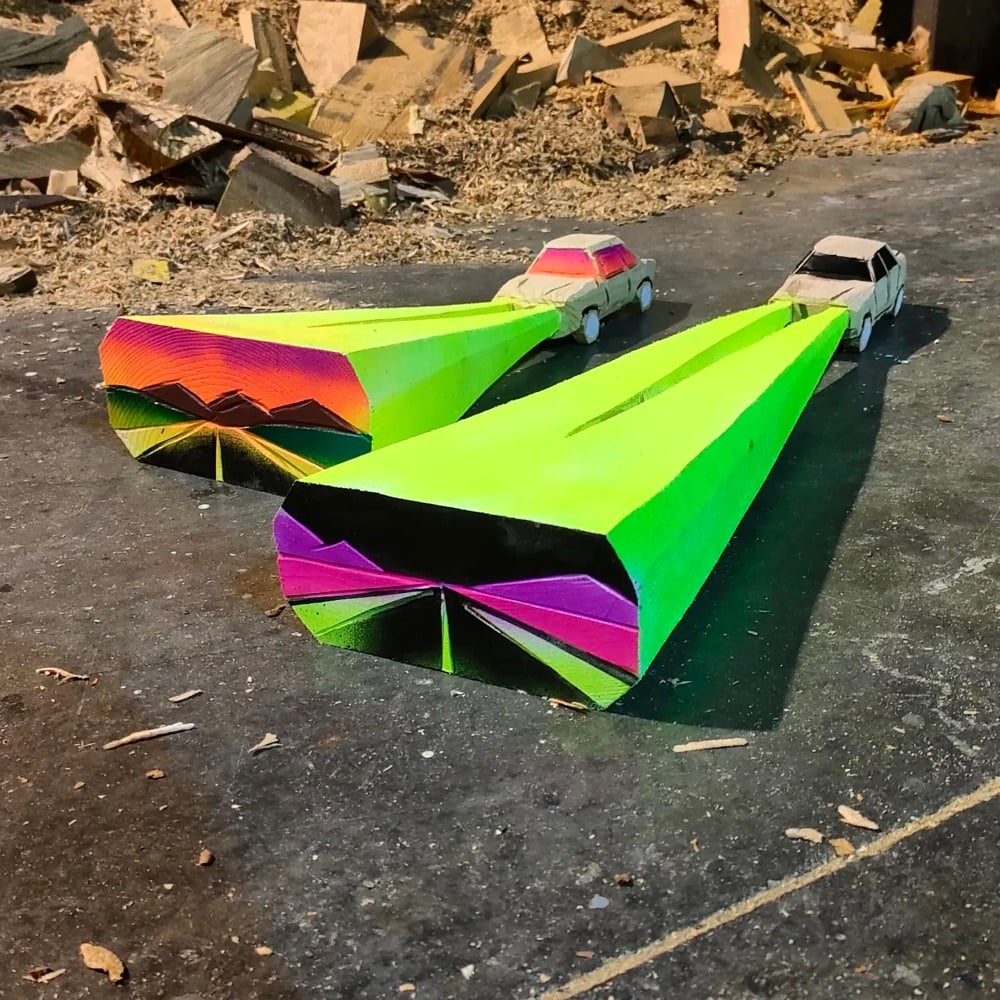

Holy crap, how cool are these carved wooden cars by Kiko Miyares! The style is just incredible. Is light a wave or a particle? Neither: light is wood. (via @scottmccloud)



This site is made possible by member support. ❤️
Big thanks to Arcustech for hosting the site and offering amazing tech support.
When you buy through links on kottke.org, I may earn an affiliate commission. Thanks for supporting the site!
kottke.org. home of fine hypertext products since 1998.



Holy crap, how cool are these carved wooden cars by Kiko Miyares! The style is just incredible. Is light a wave or a particle? Neither: light is wood. (via @scottmccloud)
Kyle Branchesi has created some fanciful “urban oddities” that imagine different locales in the UK being fully optimized for cars. For instance, here are Buckingham Palace and Westminster:
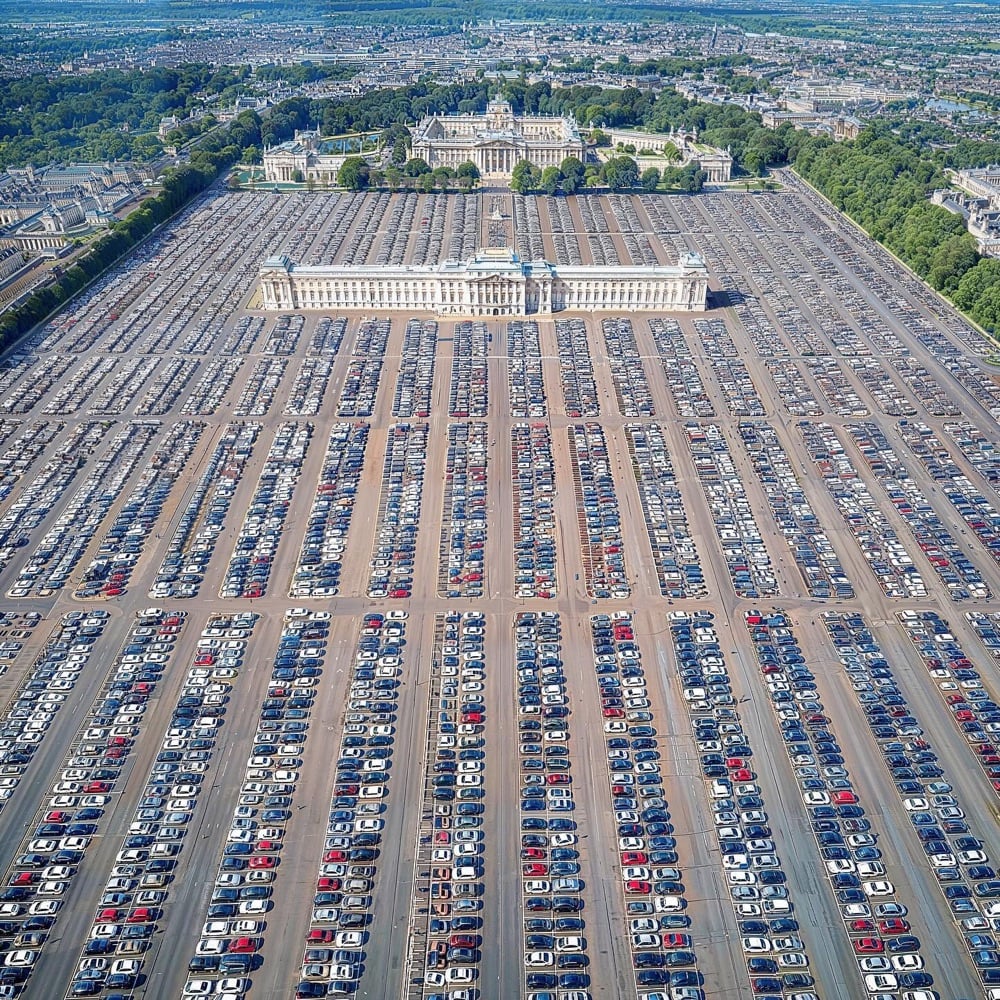

Writes Branchesi:
Amidst a political landscape where the ‘war on motorists’ is wielded as a populist tool, this series captures a future where this rhetoric has prevailed. The transformation of UK landmarks like Stonehenge into vast vehicular realms underscores the absurdity and danger of prioritizing short-term political gains over sustainable urban planning. These images mirror the contentious debates in the UK, challenging the narrative that prioritizes car ownership at the expense of public health and environmental sustainability.
Of course, in an America engineered by Robert Moses and his acolytes, many of those images don’t even look that far-fetched.
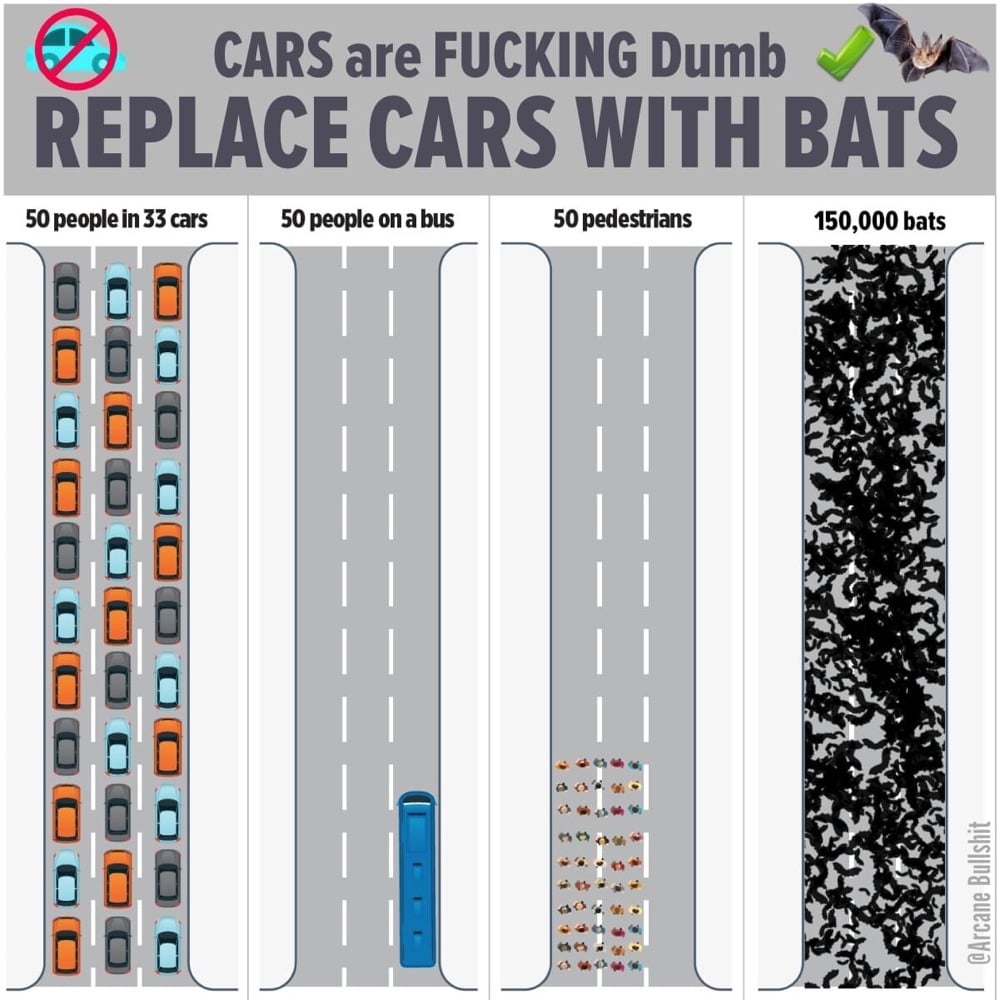
Well, it has been a loooong week and this made me laugh a stupid amount, so now you’re seeing it. ✌️

From XKCD, the progression of people’s opinions about cars & urban planning, from “I wish there wasn’t so much traffic to get into the city. They should put in more lanes.” to “Anything that makes a city a worse place to drive makes it a better place to live.” As The War on Cars said on Bluesky, “Randall Munroe, welcome to The War on Cars.”
P.S. Re: putting in more lanes, read up on induced demand and road dieting for why that’s often not a great idea.
European cities are transitioning to the use of cargo e-bikes and other micro-mobility solutions for package and other urban deliveries because they are safer, cleaner, and even faster in some cases than using vans or large trucks. The US isn’t making that same shift right now — this video from Vox explores why…and how we can move in that direction.
Fortunately, there’s a hero waiting in the wings: the e-cargo bike. Not only can these bad boys deliver packages in urban environments just as quickly (and sometimes faster) than delivery vans, they take up far less space and are much less likely to cause pedestrian deaths. Companies like Amazon, DHL, and UPS are using them in several European cities, but American cities haven’t followed suit.
In this video, we explore why that is, and lay out some of the big steps American cities would need to take to join the e-bike delivery revolution.
See also No Cars Allowed in This Swiss Town (Except Tiny Electric Ones).
A group of students from ETH Zurich and Lucerne University of Applied Sciences and Arts recently set a record for the fastest 0-62mph time with their hand-built electric car: 0.956 seconds. The 309-lb car got up to 62mph in just 40.3 feet, which is ~10 feet shorter than the width of a basketball court. The old record was 1.46 seconds, which this car just absolutely obliterated. For reference, the Tesla Plaid’s 0-60 time is 1.99 seconds.
The video of their run is kind of amazing…the car is just so ludicrously quick that I started giggling when it leapt off the line.
Adam Driver as Enzo Ferrari — a little too on the nose? Michael Mann hasn’t made a film since 2015’s Blackhat and hasn’t made an award-winning film since 2004’s Collateral, so it’s nice to see him back in the director’s chair. The film is based on Brock Yates’ 1991 book Enzo Ferrari: The Man and the Machine.
Next to the Pope, Ferrari was the most revered man in Italy. But was he the benign padrone portrayed by an adoring world press at the time, or was he a ruthless despot, who drove his staff to the edge of madness, and his racing drivers even further?
Brock Yates’s definitive biography penetrated Ferrari’s elaborately constructed veneer and uncovered the truth behind Ferrari’s bizarre relationships, his work with Mussolini’s fascists, and his fanatical obsession with speed.
Ferrari just premiered at the Venice Film Festival and early reviews are mostly positive but not overwhelmingly so. The film opens on Dec 25 in the US.
On July 4, 2023, a couple thousand people gathered in Alaska to watch old junker cars get launched off of a 300-foot cliff and just get obliterated on impact. (The launching starts at the 8-minute mark.) It’s entertaining to watch in a Jackass sort of way, but the whole thing is a metaphor for a particular facet of America: loud, dumb, fun, and wasteful.
Tom Scott visits the small Swiss ski town of Zermatt, where petrol cars have never been allowed. In the 1980s, the town skipped right from horse-drawn carriages to locally-built electric vehicles, which are made pretty much by hand and are expensive — but they are also easy to maintain and repair and can last for 30-50 years. Because space is at a premium, the town tightly controls who can own a vehicle and most of allowed vehicles are delivery vans, public transportation, or other vehicles with a communal use.
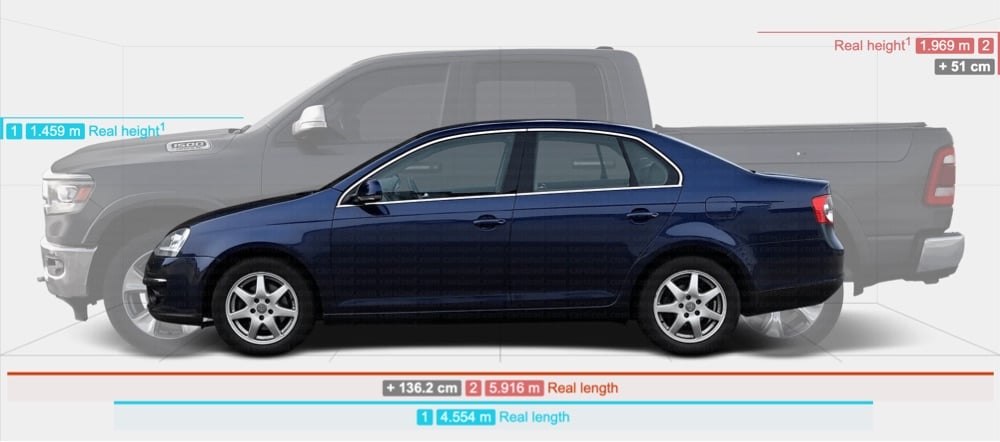
David Zipper, who researches and writes about mobility and transportation, recently did a big thread on Mastodon (and Bluesky) about car bloat: the way in which cars and trucks have gotten much bigger and heavier in the US over the past few decades and how it’s bad for society. The whole thread is worth a read…here are a couple of Zipper’s points:
Tall vehicles have bigger blind spots and are more likely to strike a person’s torso or head. Heavier vehicles exert more force crashing into a person, bicycle, or smaller car. They also have longer braking distances.
Heavier cars exert more pressure on tires, eroding them faster. Tire particles are absorbed into water, where they damage ecosystems. They also float through the air, harming human health when ingested.
For further reading, Zipper links to a number of pieces he’s written in recent months: The Blatant Greenwashing of SUVs, EVs Are Sending Toxic Tire Particles Into the Water, Soil, and Air, Carry That Weight, and The Car Safety Feature That Kills the Other Guy. Zipper’s solution to these problems is government action: for example, taxing vehicles by weight, testing vehicles for pedestrian and cyclist safety, or requiring drivers have commercial driver’s licenses for larger vehicles.
The image above is from Carsized and compares a 2018 Dodge Ram to a 2005 VW Jetta.
Right now in the US, the majority of children are driven to school, even though many of them live within walking or cycling distance.
In 1969, about 48% of students walked or cycled to school in the United States. Today that figure is about 11%. And this decline wasn’t just in the US — you can find the same trend in Australia, England, and Canada: today the majority of students are driven to school in a car. One of the larger studies we have on this issue in [British Columbia] found that 58% of 4th graders and 50% of 7th graders were driven to school by their parents.
There are various reasons for this shift, including that roads are unsafe for cyclists and pedestrians because of cars, a cultural shift towards greatly increased parental supervision of children, and inflexible parental work schedules.
Cargobox is a design concept by Meelis Lillemets for a small electric utility vehicle that embraces the boxy aesthetic in a rib-crunching bear hug. I mean, just look at this absolute rectilinear unit:
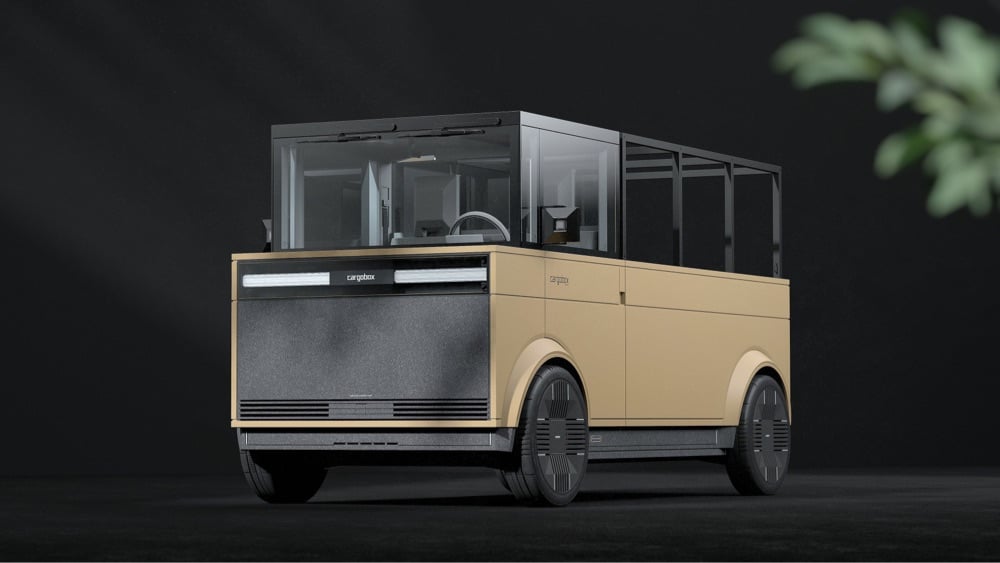
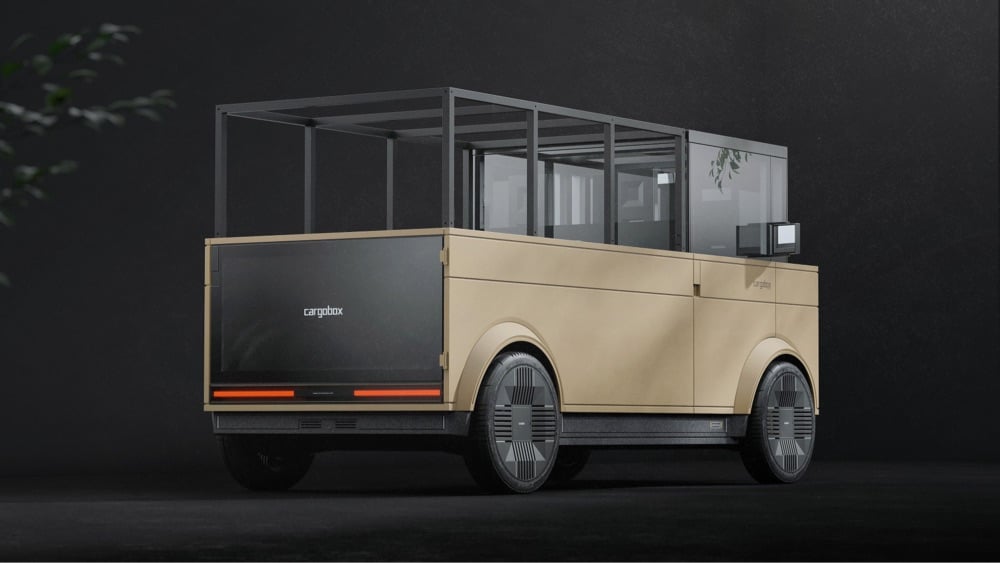
It’s like a Knoll shelving unit on wheels! Because the Cargobox is designed for use in cities, you can trade aerodynamic factors for other advantages:
Due to Cargobox only operating up to urban speeds, this study explores the extreme possibilities of design with little considerations for aerodynamics and lots of considerations for simplicity, cost, practicality, modularity.
The Cargobox will be available this fall at your local Design Within Reach store — jkjk. But seriously, the US post office should order a few thousand of these — they’d look really sharp with the red, white, and blue USPS colorway. (via yanko design)
In 2020, before the current crop of large language models (LLM) like ChatGPT and Bing, Emily Bender and Alexander Koller wrote a paper on their limitations called Climbing towards NLU: On Meaning, Form, and Understanding in the Age of Data. In the paper, Bender and Koller describe an “octopus test” as a way of thinking about what LLMs are capable of and what they aren’t. A recent profile of Bender by Elizabeth Weil for New York magazine (which is worth reading in its entirety) summarizes the octopus test thusly:
Say that A and B, both fluent speakers of English, are independently stranded on two uninhabited islands. They soon discover that previous visitors to these islands have left behind telegraphs and that they can communicate with each other via an underwater cable. A and B start happily typing messages to each other.
Meanwhile, O, a hyperintelligent deep-sea octopus who is unable to visit or observe the two islands, discovers a way to tap into the underwater cable and listen in on A and B’s conversations. O knows nothing about English initially but is very good at detecting statistical patterns. Over time, O learns to predict with great accuracy how B will respond to each of A’s utterances.
Soon, the octopus enters the conversation and starts impersonating B and replying to A. This ruse works for a while, and A believes that O communicates as both she and B do — with meaning and intent. Then one day A calls out: “I’m being attacked by an angry bear. Help me figure out how to defend myself. I’ve got some sticks.” The octopus, impersonating B, fails to help. How could it succeed? The octopus has no referents, no idea what bears or sticks are. No way to give relevant instructions, like to go grab some coconuts and rope and build a catapult. A is in trouble and feels duped. The octopus is exposed as a fraud.
The paper’s official title is “Climbing Towards NLU: On Meaning, Form, and Understanding in the Age of Data.” NLU stands for “natural-language understanding.” How should we interpret the natural-sounding (i.e., humanlike) words that come out of LLMs? The models are built on statistics. They work by looking for patterns in huge troves of text and then using those patterns to guess what the next word in a string of words should be. They’re great at mimicry and bad at facts. Why? LLMs, like the octopus, have no access to real-world, embodied referents. This makes LLMs beguiling, amoral, and the Platonic ideal of the bullshitter, as philosopher Harry Frankfurt, author of On Bullshit, defined the term. Bullshitters, Frankfurt argued, are worse than liars. They don’t care whether something is true or false. They care only about rhetorical power — if a listener or reader is persuaded.
The point here is to caution against treating these AIs as if they are people. Bing isn’t in love with anyone; it’s just free-associating from an (admittedly huge) part of the internet.
This isn’t an exact analogue, but I have a car that can drive itself under certain circumstances (not Tesla’s FSD) and when I turn self-drive on, it feels like I’m giving control of my car to a very precocious 4-year-old. Most of the time, this incredible child pilots the car really well, better than I can really — it keeps speed, lane positioning, and distance to forward traffic very precisely — so much so that you want to trust it as you would a licensed adult driver. But when it actually has to do something that requires making a tough decision or thinking, it will either give up control or do something stupid or dangerous. You can’t ever forget the self-driver is like a 4-year-old kid mimicking the act of driving and isn’t capable of thinking like a human when it needs to. You forget that and you can die. (This has the odd and (IMO) under-appreciated effect, when self-drive is engaged, of shifting your role from operator of the car to babysitting the operator of the car. Doing a thing and watching something else do a thing so you can take over when they screw up are two very different things and I think that until more people realize that, it’s going to keep causing unnecessary accidents.)
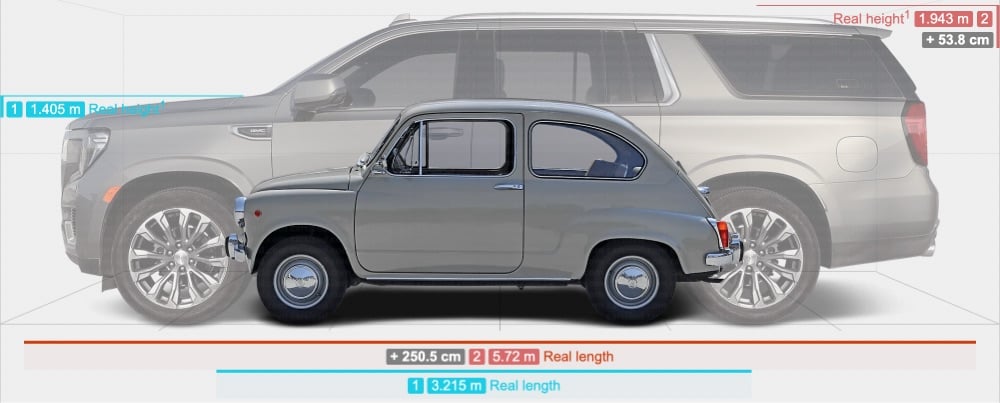
The American car has gotten bigger in the past few decades but parking spot size has not kept pace.
Regardless of the cause, the end result is roughly 50 percent of the American car market switched from sedans and wagons to SUVs, especially midsize and large SUVs, chunkifying the average American car. Consider someone who switched from a Honda Civic to a Honda CR-V. This added about three inches in width. A CR-V to a Pilot, a large SUV, would add five more inches in width. This may not sound like much, but repeat for half the cars in a parking lot and it adds up. For example, in a 700-space garage, if each car is four inches wider than its predecessor, that is 233 additional feet in car width-from the goal line to the opponent’s 23 yard line on a football field-that needs to be accommodated.
The local community mailing list in the small town I live in has been discussing this issue recently. Over the past 20 years (and in my opinion, it’s really escalated in the past few years), it’s become more and more difficult to park in the lot that serves the more popular of the town’s two grocery stores, 3-4 restaurants, and a few shops. Length is more the issue here than width: we’ve got many more massive pickup trucks, SUVs, and sport utility wagons around here than we used to have, and it’s become much harder to navigate the increasingly narrow aisles between rows of parked cars. I hate parking there now — getting into or backing out of a spot often requires multiple tries and just clogs things up for everyone.
BTW, before I get any feedback like “ban cars!”, you should know that I’m a very reluctant car owner — the amount of resources America devotes to cars over better alternatives is one of the many reasons why — but biking and public transportation in rural areas with cold winters are not viable options. I try to drive as little as possible and consolidate trips, but it still ends up being thousands of miles a year. (via curious about everything)
Note: The image above from Carsized compares the size of a 1955 Fiat 600 with a 2020 GMC Yukon.


In 1955, the Ford Motor Company hired poet Marianne Moore to come up with some names for their revolutionary new car. Moore ended up submitting some amazing names, including “Silver Sword”, “Intelligent Whale”, “Angel Astro”, and “Utopian Turtletop”.
What Moore lacked in corporate nomenclature experience, she made up for in enthusiasm and imagination: she submitted over two dozen names for consideration, each one more delightful — and unlikely — than the last. In the end, the poet’s suggestions were rejected and the company’s chairman himself named the vehicle. Thus was born the notorious car known as the Edsel.
Ford realized perhaps too late that they shouldn’t have, in fact, sent a poet — but we’re sure glad they did.
Back here in the present day, Pentagram commissioned the legendary Seymour Chwast to turn Moore’s amazing collection of names into a booklet of illustrations that imagine what these cars might look like.
I was skeptical but if you listen carefully, there are some really solid ideas in this video on why designing cities around lots of cars makes sense.
Brb, currently buying some cars and moving to cities.
It is Friday and this is the perfect Friday sort of post. BeamNG is a video game of sorts that’s “a dynamic soft-body physics vehicle simulator capable of doing just about anything”. In the simulator, you can quickly devise all sorts of situations with a variety of cars and then press play to see what happens, with (mostly) realistic physics and collisions. For instance, here’s Cars vs Big Bulge:
Chained Cars vs Bollards:
Cars vs 100 Fallen Trees:
Trains vs Giant Pit:
And many many more. My god if this simulator had been around when I was 12 years old, I might not have done anything else. Hell, if I downloaded and installed this right now, I might not ever get anything done ever again. (via @tvaziri)
From the Brick Technology YouTube channel, a demonstration on how to build a 5-speed manual transmission with Lego. It even has a gear stick and goes in reverse. Unloaded, 1st gear spins an axel at 384 rpm and 5th gear spins at 3000 rpm. Really impressive.
See also Designing a Lego Car to Cross Gaps and Engineering a Capable Climbing Lego Car.
This drone fly-through of Tesla’s new factory in Berlin is amazing. I’ve never seen anything quite like this — the drone flies through the robotic machinery in between cycles of stamping out parts and also through the cars as they are being assembled. A uniquely effective how-things-are-made video.
YouTuber diorama111 took a 1/87 scale model car — about the size of a Jolly Rancher — and converted it into an incredibly small RC car that’s controlled via Bluetooth and even has working headlights, tail lights, and turn signals. It’s rechargeable too — the charging light turns green when the battery is full. (via @willhains)
Car builder Jay Ohrberg has constructed many familiar vehicles for TV and movies, including the DeLorean from Back to the Future, KITT for the Knight Rider movie,1 several Batmobiles, and the Duke boys’ General Lee. But the Ohrberg ride I really like is his robin’s egg blue double-wide Cadillac.
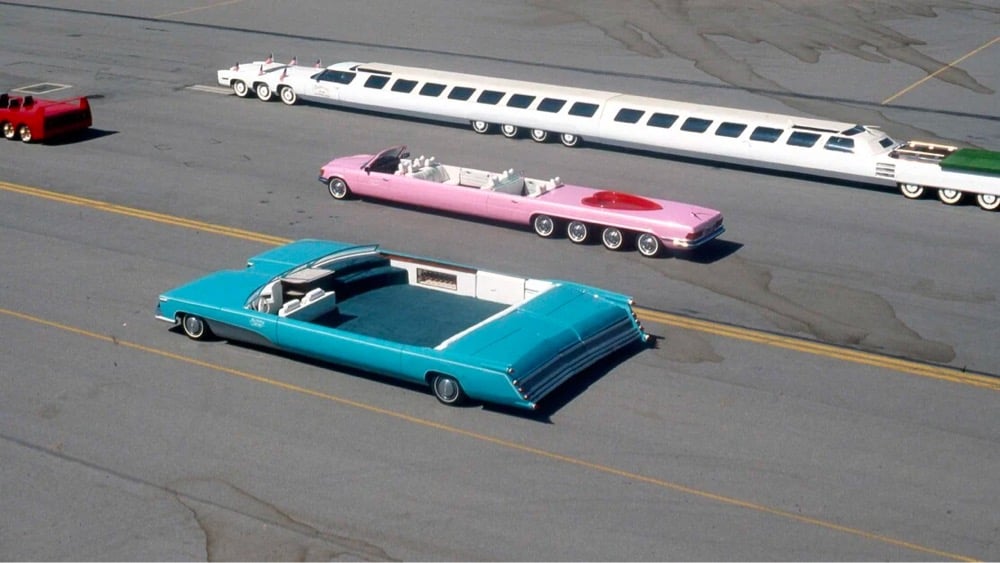
My god, the ingenious outlandishness of that car. The other cars in the photo are equally preposterous, but there is something about the squarish proportions of that Caddy that is really satisfying. And it somehow looks massive and miniature at the same time?
There was a Knight Rider movie?! With Star Trek’s James Doohan in it?↩
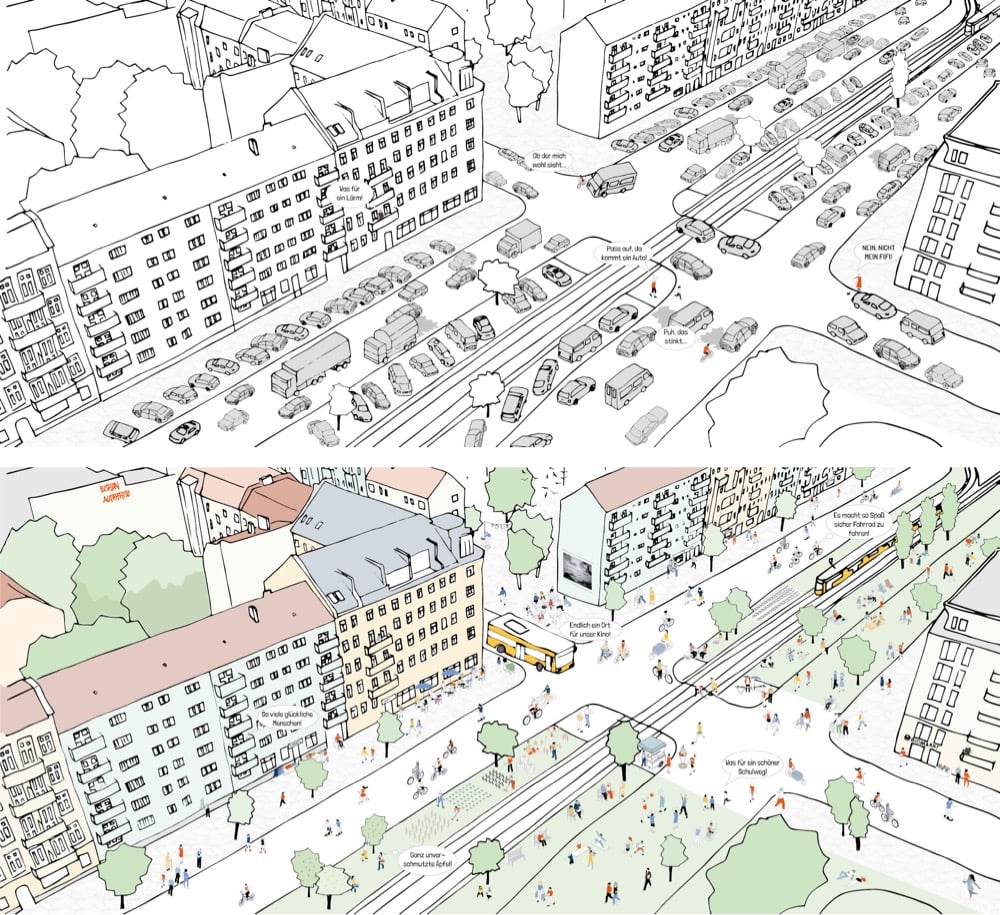
A group of Berlin residents has put forward a proposal to turn all of central Berlin (an area larger than Manhattan) into a car-free zone. What would that mean in practice? Adele Peters at Fast Company explains:
As in other cities, “car free” doesn’t literally mean that no cars could enter the area, but private car use would dramatically drop. Special permits would be given to emergency vehicles, garbage trucks, taxis, commercial and delivery vehicles (though many deliveries in Berlin already happen on cargo bikes), and residents with limited mobility who depend on cars. Others would be able to use a car, likely through a car-sharing program, up to 12 times a year to run longer errands. But most people, most of the time, would walk, bike, or take public transportation.
That sounds amazing and reasonable. There are five main goals the plan is trying to achieve for Berliners: better quality of life (walkable vibrant streets), better health (less pollution & noise), space for people (not vehicles), less climate impact, and street safety:
Berlin’s streets must become safer. There are still too many traffic deaths and injuries in Berlin. Especially the weakest must be protected: pedestrians and cyclists. Children and senior citizens in particular should be able to feel safe on Berlin’s streets; otherwise their mobility will be restricted because the risk or fear of an accident is too great.
The city is currently considering whether to turn the proposal into a law. This would be amazing to see in Berlin (and in some American cities too).
In the second video by Brick Experiment Channel I’ve posted here in the past week, a Lego car is repeatedly adapted to cross larger and larger gaps, until it can cross a massive gap just a little narrower than the length of the car. As I said before about their climbing car video, watching the iterative process of improving a simple car performing an increasingly difficult task using familiar design objects is such an accessible way to observe how the process of engineering works.
One of the things you get to witness is when a particular design tactic dead ends, i.e. when something that worked across a shorter gap is completely ineffective crossing a wider distance. No amount of tinkering with that same design will make it work…you have to find a whole new way to do it.
In this video, a simple Lego car is repeatedly modified to navigate more and more difficult obstacles until it can climb up and down almost anything. This fun exercise also doubles as a crash course in engineering and how to build a capable all-terrain vehicle as it “demonstrates what you need to consider: wheel diameter, gear ratio, 4-wheel drive, tire grip, breakover angle, weight distribution”. (via the prepared)
Using photos and films made in the 1910s and 1920s, Myles Zhang made this animated reconstruction of Ford’s Model T assembly line as it would have appeared circa 1915, from start (chassis assembly) to finish (driving it off the floor).
Ford was not the first, but his car and moving assembly line were certainly the most successful and memorable. After creating his version of the automobile in 1896, Ford moved workshops first to Mack Avenue and later to Piquette Avenue in Detroit. These first two factories were small-scale structures for limited car production. Only in 1913 at Ford’s third factory at Highland Park did mass-production begin on a truly large scale. As shown in this film, here Ford applied assembly line methods throughout the factory to all aspects of car production.
There’s also a virtual reality model of the factory you can fly around in.
Tom Standage, whose The Victorian Internet was hugely influential to me in how to think about the history of technology, is out with a new book on transportation and cars: A Brief History of Motion: From the Wheel, to the Car, to What Comes Next (ebook). In this excerpt, he argues that the world has reached “peak car” — “the point at which car ownership and use level off and start to decline”.
Evidence for peak car in Western countries, meanwhile, has been accumulating for some time. In America, the total number of vehicle miles traveled has continued to increase. But it has been growing more slowly than both the total number of vehicles and the population. The number of miles driven per vehicle, and per person of driving age, both peaked in 2004 and have since fallen to levels last seen in the 1990s. The average distance driven per person per year peaked in the 2000s or earlier in many Western cities including London, Stockholm, Vienna, Houston, and Atlanta. In Australia, Belgium, Britain, France, Germany, Italy, Japan, New Zealand, and Spain, distance traveled per person has been flat or falling since the early 2000s (in Britain, the average motorist drove seventy-six hundred miles in 2018, down from ninety-two hundred in 2002). Miles traveled by car per annum per capita in Italy, Britain, the Netherlands, and Sweden peaked in 2000, 2002, 2004, and 2005 respectively.
See also this interview with Standage in Grist (which features the phrase “horse-drawn transport monoculture”).
The pandemic caused a drop in driving, and then an uptick as people came out of lockdowns and decided, in some cases, that they would rather drive than use public transit. But the longer-term trend seems clear: driving is becoming less popular, because it’s becoming less convenient, and the alternatives are becoming more convenient. The growing prevalence of remote working may encourage people to move to urban fringes where it’s difficult to live without a car, but overall I don’t think this will be enough to reverse the longer-term trend.
And here’s another excerpt of Standage’s book from The Guardian: The lost history of the electric car — and what it tells us about the future of transport.
In 1897, the bestselling car in the US was an electric vehicle: the Pope Manufacturing Company’s Columbia Motor Carriage. Electric models were outselling steam- and petrol-powered ones. By 1900, sales of steam vehicles had taken a narrow lead: that year, 1,681 steam vehicles, 1,575 electric vehicles and 936 petrol-powered vehicles were sold. Only with the launch of the Olds Motor Works’ Curved Dash Oldsmobile in 1903 did petrol-powered vehicles take the lead for the first time.
Perhaps the most remarkable example, to modern eyes, of how things might have worked out differently for electric vehicles is the story of the Electrobat, an electric taxicab that briefly flourished in the late 1890s. The Electrobat had been created in Philadelphia in 1894 by Pedro Salom and Henry Morris, two scientist-inventors who were enthusiastic proponents of electric vehicles. In a speech in 1895, Salom derided “the marvelously complicated driving gear of a gasoline vehicle, with its innumerable chains, belts, pulleys, pipes, valves and stopcocks … Is it not reasonable to suppose, with so many things to get out of order, that one or another of them will always be out of order?”
The two men steadily refined their initial design, eventually producing a carriage-like vehicle that could be controlled by a driver on a high seat at the back, with a wider seat for passengers in the front. In 1897 Morris and Salom launched a taxi service in Manhattan with a dozen vehicles, serving 1,000 passengers in their first month of operation. But the cabs had limited range and their batteries took hours to recharge. So Morris and Salom merged with another firm, the Electric Battery Company. Its engineers had devised a clever battery-swapping system, based at a depot at 1684 Broadway, that could replace an empty battery with a fully charged one in seconds, allowing the Electrobats to operate all day.

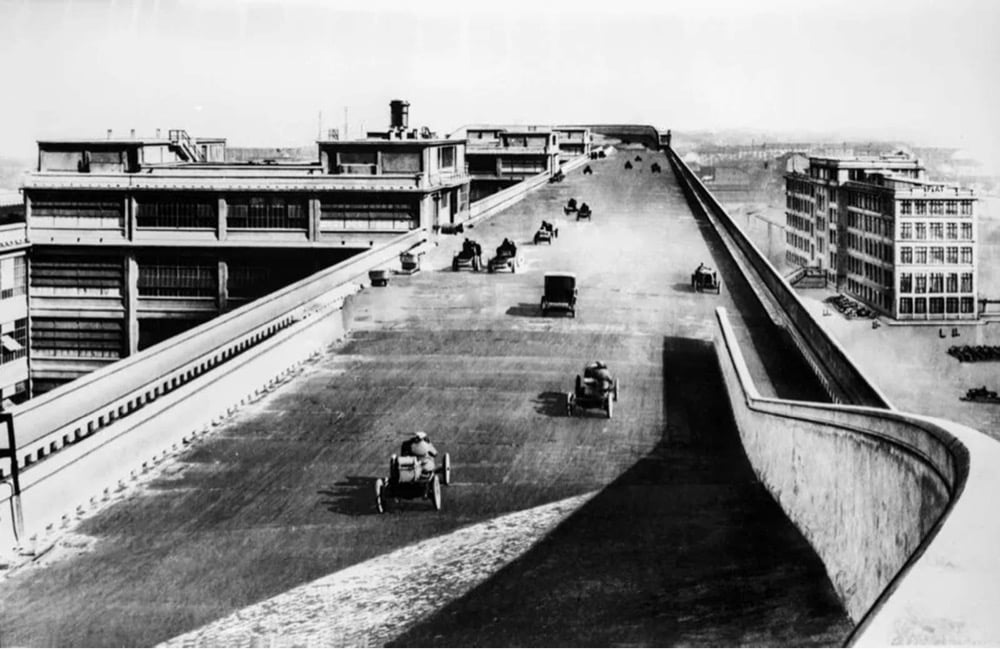
When it was built in the 1920s in Turin, Italy, the Fiat factory was designed with a racetrack on the top of the building, both for car testing purposes and for racing.
The factory’s best-known symbol is the test track, which is a superb piece of design modeling, and construction that occupies the whole roof surface of the workshops. Two 443 meters straights, joined by parabolic bends, form a continuous track for testing the cars.
Originally, as soon as the cars left the assembly lines they could flow directly upward to the test track through the snail-shaped ramps completing the whole processing cycle inside the factory. Moreover, these spiraling ramps inside the building allowed the cars to be driven back down and into showrooms.
The track was a little over 1/2 mile long. Many more views at Rare Historical Photos. (via @laxgani)
In the last decade, the number of pedestrians hit by cars in the United States has increased by almost 50%, even as that rate has decreased in Europe and other wealthy nations (“thanks primarily to new street and crosswalk designs, implemented in the belief that most road deaths are avoidable”). In a review of Angie Schmitt’s 2020 book Right of Way: Race, Class, and the Silent Epidemic of Pedestrian Deaths in America for the New York Review of Books, Peter Baker explores why America is increasingly hostile to pedestrians. Part of the reason is the rise of SUVs (and one would assume, trucks) in the US:
In the 1980s SUVs were a rarity. It was only in 2015 that they started outselling sedans. In 2018 they accounted for just under half of new vehicle sales, more than any other category of car. The height of American SUVs makes it harder for drivers to see pedestrians and means the hit comes higher on the body — and backed by extra mass — which makes organ damage and death two to three times more likely for adults, and four times more likely for children. More SUVs than ever are “overpowered” — that is, equipped with a high horsepower-to-weight ratio; this makes speeding more likely, which, like increased height and weight, increases the chances of pedestrians being hit and killed. More cars on the road, taller and heavier than ever before, going faster: each factor alone presents a serious problem. Together, they are a recipe for disaster.
And pedestrian deaths are also not equally distributed across population groups, both because of who owns cars but also shifts in where people are living:
Low-income pedestrians, Black and Hispanic pedestrians, elderly pedestrians, and disabled pedestrians are all disproportionately affected. Black and Hispanic men are twice as likely as white men to die while walking, and four times more likely than the average member of the population. Native American men are almost five times more likely.
The piece is interesting throughout, as is Schmitt’s book I’m sure.
Car warning sounds urging drivers to buckle up or turn off the headlights can be quite unpleasant to listen to. So Nissan teamed up with sound designers at Bandai Namco, the gaming company known for Pac-Man and Tekken, to replace those warning noises with something more musical.
I had a car once that beeped really sharply and loudly whenever the temperature dropped to 37°F as a warning for potential slippery roads and it scared the shit out of me every time. As someone who is sensitive to sound, I applaud efforts like these to make non-emergency sounds less jarring. (via rob walker (again))
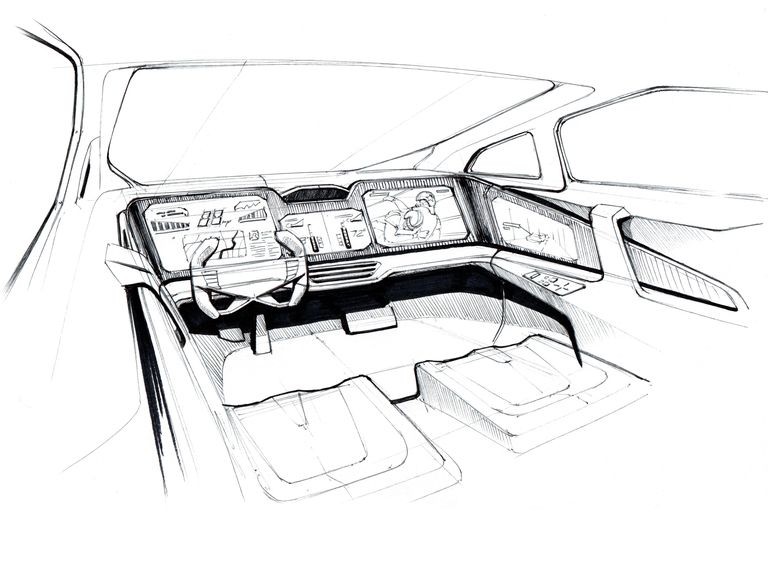
Car and Driver has a good article that both assesses the brief history of electric car design and looks at where things might be headed going forward, as designers break free of some early conceptions about what a car (or what a specifically electric car) needed to look like. Some highlights:
Many early EV ventures used existing platforms and arranged electric powertrains to fit where gas engines and transmissions had previously resided. Even Tesla’s first attempt was a revamped Lotus Elise without its 1.8-liter inline-four. Working on a nondedicated, or “nonnative,” electric platform limited designers’ options for positioning the battery and motor. Automakers often stacked batteries under the rear seat—which is why early EVs sometimes offered less legroom or cargo space than their gas counterparts—and put the motor assemblies under the hood. Even the Nissan Leaf, which packages an underfloor battery in a dedicated EV platform, still follows the old philosophy of carrying a motor where an engine normally goes. Aesthetically, too, the early electrics couldn’t break away from distinct grille shells and large air vents…
“We have the opportunity to give the car a totally new kind of proportion,” says Steffen Köhl, Mercedes-Benz director of advanced exterior design. Köhl worked on the EQS, the first car on Mercedes’s new Electric Vehicle Architecture (EVA). The EQS is a luxury sedan with a long wheelbase, a sweeping bridge of a roofline, and a large, screen-filled cabin. Think of it as the S-class of EVs. The underpinnings of an EV allow for bigger interiors in smaller vehicles, he says. It can be “cabin-forward, with short overhangs in front and rear. Since the battery is flat ground, we can try a new kind of interior—smooth panels, the center console floating. There are no more ups and downs between the seats.”
For my part, even this broader vision is still too focused on coupes, sedans, SUVs, and other “traditional” four-to-five seat cars. There’s a brief discussion of the new F-150 electric pickup truck, but very little about buses or single-rider ATV designs. A lot of looks at the “skateboard” chassis popularized by Tesla, not enough actual skateboards. If we’re going to cast a broader view, let’s cast it as broad as we can.
Stay Connected